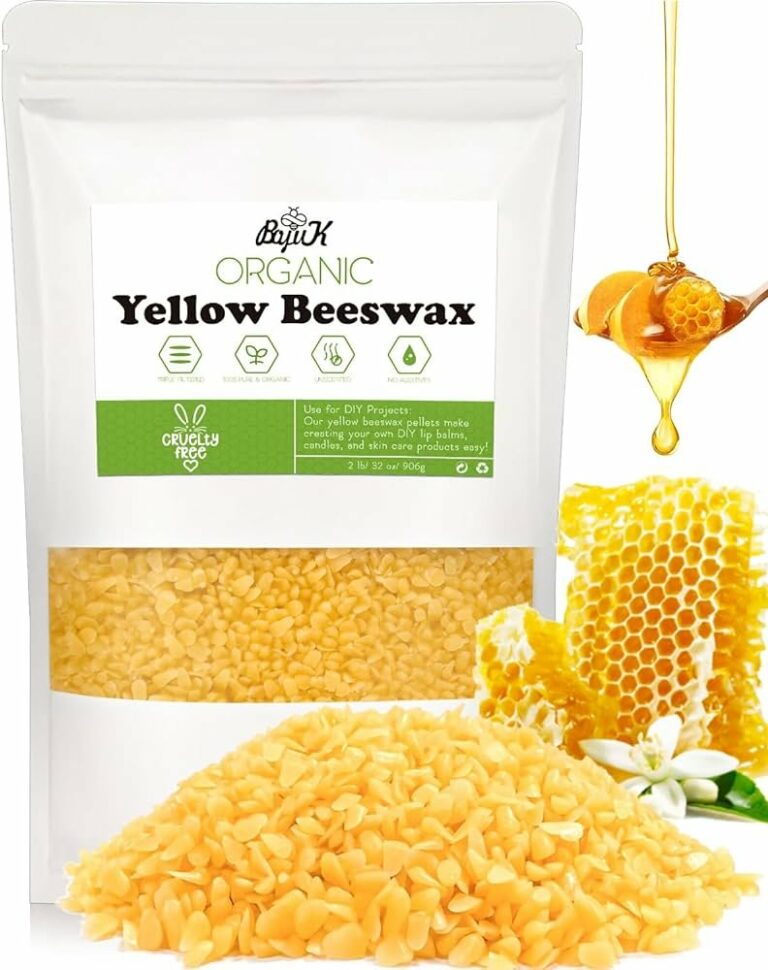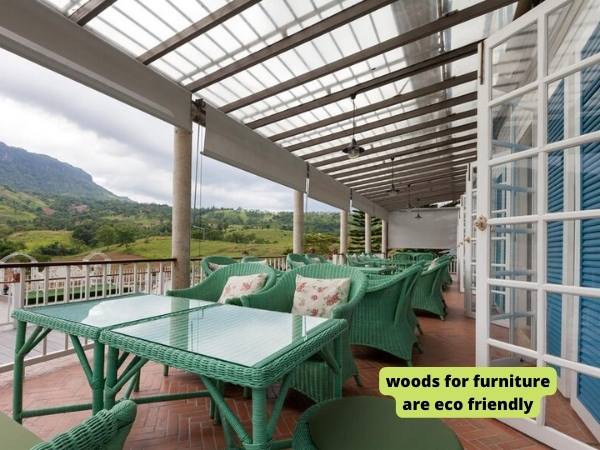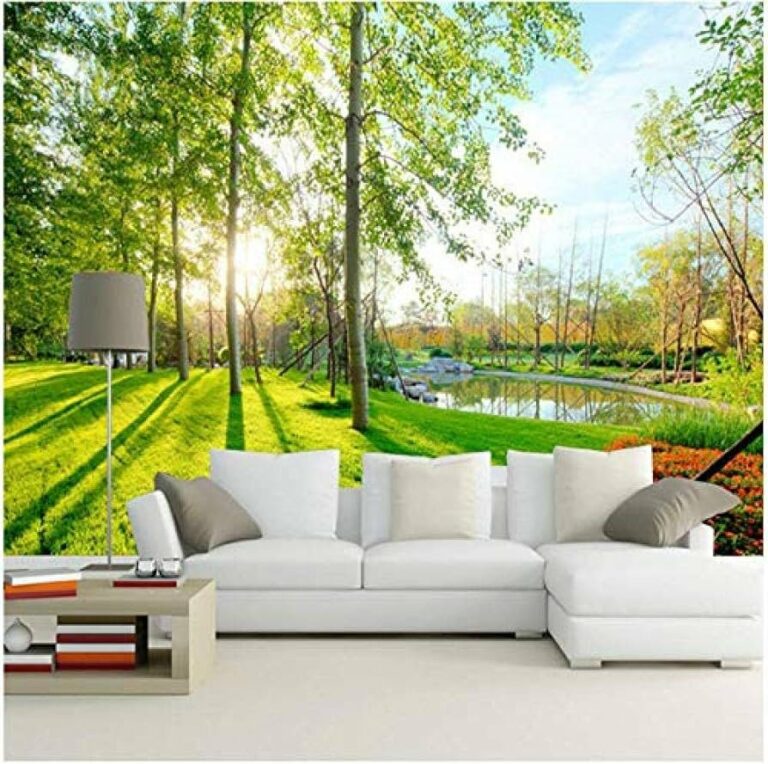Eco-Friendly Alternatives Plastic Furniture Finishes
Looking for Eco-Friendly Alternatives Plastic Furniture Finishes. You’re in luck! In this article, we’ll explore some sustainable options that not only enhance the appearance of your furniture but also contribute to a greener planet.
From natural paints and plant-based lacquers to recycled plastic coatings, we’ll delve into the world of environmentally friendly finishes, providing you with practical and accessible solutions. So, if you’re ready to give your plastic furniture a sustainable makeover, let’s dive in and explore what are some eco-friendly alternatives to traditional finishes for plastic furniture.
Eco-Friendly Alternatives Plastic Furniture Finishes:
Plastic furniture has become a popular choice due to its affordability, durability, and versatility. However, traditional finishes for plastic furniture often involve the use of harmful chemicals that can be detrimental to the environment and human health. Thankfully, there are eco-friendly alternatives available that not only help reduce the carbon footprint but also provide a healthier and more sustainable option. In this article, we will explore some of these eco-friendly alternatives to traditional finishes for plastic furniture.
1. Water-Based Paints and Stains
Water-based paints and stains are excellent eco-friendly alternatives to traditional finishes for plastic furniture. These products are formulated using water as the primary solvent, eliminating the need for harmful chemicals such as volatile organic compounds (VOCs) found in oil-based paints. Water-based finishes have a lower environmental impact and emit fewer harmful fumes during application.
Subheadings:
Benefits of Water-Based Paints and Stains
- Reduced Volatile Organic Compounds
- Less Environmental Impact
- Easy Cleanup
- Quick Drying Time
Application of Water-Based Paints and Stains
- Preparation
- Priming
- Painting or Staining
- Sealing
2. Powder Coating
Powder coating is another eco-friendly alternative to traditional finishes for plastic furniture. In this process, a dry powder is applied to the surface of the plastic furniture and then heated to create a durable and attractive finish. Powder coating does not require the use of solvents or emit harmful chemicals during application, making it a more environmentally friendly option.
Subheadings:
Advantages of Powder Coating
- Durability and Longevity
- Wide Range of Colors and Finishes
- Resistance to Chipping and Fading
- Efficiency and Waste Reduction
The Process of Powder Coating
- Surface Preparation
- Application of Powder
- Curing
3. Natural Oils and Waxes
Using natural oils and waxes is a sustainable and eco-friendly way to finish plastic furniture. These finishes are derived from plant-based sources and do not contain harmful chemicals or additives. Natural oils and waxes penetrate the surface of the plastic, protecting while enhancing its natural beauty.
Subheadings:
Types of Natural Oils and Waxes
- Tung Oil
- Linseed Oil
- Beeswax
- Carnauba Wax
Application of Natural Oils and Waxes
- Surface Preparation
- Application Techniques
- Buffing and Polishing
4. Bio-Based Resins
Bio-based resins offer an eco-friendly alternative to traditional finishes for plastic furniture. These resins are derived from renewable resources, such as plant-based oils or agricultural waste, reducing the reliance on petroleum-based materials. Bio-based resins can provide a durable and protective finish while minimizing the environmental impact.
Subheadings:
Benefits of Bio-Based Resins
- Renewable and Sustainable
- Reduced Carbon Footprint
- Low Toxicity
- UV Stability
Application of Bio-Based Resins
- Surface Preparation
- Application Techniques
- Curing Process
5. Natural Fiber Wrapping
Wrapping plastic furniture with natural fibers is a creative and eco-friendly way to give it a unique and sustainable finish. Materials such as rattan, bamboo, and jute can be woven around the plastic frame, adding natural texture and enhancing the overall appearance. This alternative not only reduces the use of traditional finishes but also provides additional strength and durability to the furniture.
Subheadings:
Benefits of Natural Fiber Wrapping
- Eco-Friendly and Sustainable
- Improved Aesthetics
- Enhanced Durability
- Easy Maintenance
Application of Natural Fiber Wrapping
- Material Selection
- Woven Techniques
- Securing the Wrapping
- Finishing Touches
6. Recycled Plastic Lumber
Recycled plastic lumber is an eco-friendly alternative not only for finishing but also for the construction of plastic furniture. Made from recycled plastic waste, this material offers a durable and low-maintenance option. Recycled plastic lumber can be molded, shaped, and colored to resemble traditional wood without the need for harmful finishes.
Subheadings:
Advantages of Recycled Plastic Lumber
- Reduced Environmental Impact
- Resistance to Decay and Insects
- Low Maintenance
- Long Lifespan
Application of Recycled Plastic Lumber
- Material Selection
- Design Considerations
- Assembly Techniques
- Finishing and Maintenance
7. Natural Dyes and Pigments
Using natural dyes and pigments is a sustainable and non-toxic way to add color to plastic furniture. Derived from plant-based sources, these dyes and pigments offer a wide range of vibrant and earthy tones without the use of harmful synthetic chemicals. Natural dyes create unique and captivating finishes while significantly reducing the environmental impact.
Types of Natural Dyes and Pigments
- Plant-Based Dyes
- Mineral Pigments
- Natural Extracts
- Vegetable Dyes
Application of Natural Dyes and Pigments
- Preparation of Dye Baths
- Application Techniques
- Fixation and Color Fastness
8. UV Protective Coatings
UV protective coatings are an essential eco-friendly alternative to traditional finishes for plastic furniture used outdoors. These coatings contain additives that protect the plastic from UV radiation, preventing fading, discoloration, and degradation. UV protective coatings prolong the lifespan of plastic furniture and reduce the need for frequent refinishing.
Subheadings:
Benefits of UV Protective Coatings
- UV Radiation Protection
- Color Retention
- Resistance to Weathering
- Enhanced Durability
Application of UV Protective Coatings
- Surface Preparation
- Coating Techniques
- Curing and Drying
9. Natural Shellacs
Natural shellacs are an eco-friendly option for finishing plastic furniture, especially wooden components. Shellac is derived from the resin secreted by the female lac bug and is a renewable and sustainable material. It provides a protective coating that enhances the natural beauty of the wood while being non-toxic and easily renewable.
Subheadings:
Advantages of Natural Shellacs
- Renewable and Sustainable
- Enhanced Wood Grain and Depth
- Non-Toxic
- Easy Maintenance and Repair
Application of Natural Shellacs
- Surface Preparation
- Application Techniques
- Curing and Buffing
10. Acid Etching and Sandblasting
Acid etching and sandblasting are eco-friendly alternatives to surface finishes that create unique textures on plastic furniture. These processes involve selectively removing layers of plastic using acids or abrasive materials to create interesting patterns or visual effects. Acid etching and sandblasting offer a creative and sustainable way to enhance the appearance of plastic furniture without the use of harmful chemicals.
Subheadings:
Acid Etching Process
- Surface Preparation
- Etching Technique
- Neutralizing and Cleaning
Sandblasting Process
- Surface Preparation
- Equipment and Abrasive Selection
- Technique and Safety Measures
- Finishing and Post-Treatment
Frequently Asked Questions
What are some eco-friendly alternatives to traditional finishes for plastic furniture?
1. Can natural oils be used as an eco-friendly alternative to traditional finishes for plastic furniture?
Yes, natural oils such as linseed oil, tung oil, and soy-based oils can be used as eco-friendly finishes for plastic furniture. These oils penetrate the surface of the plastic, providing protection and enhancing the appearance, without harmful chemicals or toxins.
2. Are water-based finishes a sustainable option for plastic furniture?
Absolutely! Water-based finishes, including acrylics and polyurethanes, are eco-friendly alternatives to traditional finishes. They have lower levels of volatile organic compounds (VOCs) and are easier to clean up, making them safer for both the environment and human health.
3. Can recycled plastic be used as a finish for plastic furniture?
Yes, recycled plastic can be transformed into a coating material and used as a sustainable finish for plastic furniture. By reusing plastic waste, this option helps reduce landfill waste and promote circular economy practices.
4. Are natural waxes a viable eco-friendly option for finishing plastic furniture?
Indeed! Natural waxes like beeswax and carnauba wax can be utilized as eco-friendly finishes for plastic furniture. These waxes provide a protective layer, enhance the appearance, and do not release harmful chemicals into the environment.
5. Is powder coating a sustainable alternative for completing plastic furniture?
Yes, powder coating is an eco-friendly option for finishing plastic furniture. The process involves applying a dry powder to the surface, which is then cured under heat. Powder coating is durable, resistant to chipping, and reduces the release of volatile organic compounds (VOCs) into the air compared to liquid finishes.
6. Can natural dyes and pigments be used to finish plastic furniture in an eco-friendly way?
Absolutely! Natural dyes and pigments derived from plants, fruits, or minerals can be used to achieve eco-friendly finishes for plastic furniture. These dyes are non-toxic, renewable, and offer a wide range of vibrant colors.
7. Is the use of UV-cured finishes considered sustainable for plastic furniture?
Yes, UV-cured finishes are a sustainable option for plastic furniture. This process involves using ultraviolet light to cure and harden the finish, eliminating the need for solvents. UV-cured finishes have a low environmental impact and offer excellent durability.
Final Thoughts
there are several eco-friendly alternatives to traditional finishes for plastic furniture. These alternatives include water-based paints and finishes, plant-based and bio-based coatings, as well as natural oil finishes. By opting for these environmentally friendly options, we can contribute to reducing the use of harmful chemicals and lower our carbon footprint. These alternatives not only provide a safer and healthier living environment, but also promote sustainability in the furniture industry. So, when considering how to finish plastic furniture, it is important to explore and choose from these eco-friendly alternatives to protect both our health and the planet.


